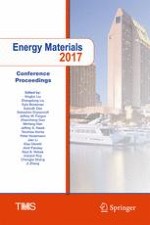2017 | Book | 1. edition
Energy Materials 2017
Editors: Xingbo Liu, Zhengdong Liu, Kyle Brinkman, Subodh Das, Sebastien Dryepondt, Jeffrey W. Fergus, Zhancheng Guo, Minfang Han, Jeffrey A. Hawk, Teruhisa Horita, Peter Hosemann, Jian Li, Elsa Olivetti, Amit Pandey, Raul B. Rebak, Indranil Roy, Chengjia Shang, Ji Zhang
Publisher: Springer International Publishing
Book Series : The Minerals, Metals & Materials Series
